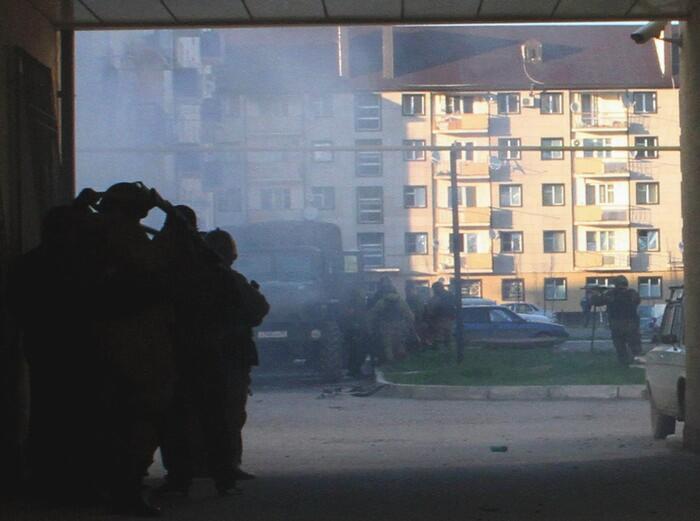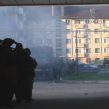
Developments In the North Caucasus In 2011: Moscow Has Little to Cheer About
Publication: Eurasia Daily Monitor Volume: 8 Issue: 228
By:

The end of the year is the time to review the year’s events. In the case of the North Caucasus, we can safely conclude that Russian authorities stopped hiding the fact that the situation in the region is alarming (www.kavkaz-uzel.ru/articles/195952/) and there are no signs it will improve any time soon. So it is not surprising that recent polls in Russia show that people are concerned about the explosiveness and tension of the situation in the North Caucasus (https://actualcomment.ru/news/32285/). Only 12 percent surveyed in a recent poll said they think the situation in the region might improve in the near future.
Recent news from the region demonstrates why: for example, there were a number of violent insurgency-related incidents on December 12 alone. In the village of Islamei in Kabardino-Balkaria’s Baksan district, a 30-year-old investigator, Murat Gergov, was wounded in an attack and later died. That same day, several persons were killed in a bomb blast at a house in the town of Chegem. Meanwhile, in Dagestan, three people who allegedly shot at police on the outskirts of Karlanyurt village in Khasavyurt district were killed by return fire. Those killed were later identified as Yusup Magomedov, a 25-year-old resident of Bairamul village in Khasavyurt district who was on the Russian federal wanted list, along with 25-year-old Shamil Makhmudov of the city of Khasavyurt and 24-year-old Islam Khartishev of the village of Babayurt in Babayurt district (www.regnum.ru/news/kavkaz/1478760.html#ixzz1gPATd84f).
Earlier, in another incident illustrating the situation in the North Caucasus, the National Anti-Terrorist Committee announced on December 9 that four militants had been eliminated in Karachaevo-Cherkessia, including the leader of the republic’s rebels, Biaslan Gochiyaev, and three accomplices. On December 5, military jets reportedly bombarded a wooded area near the village of Alkhazurovo in Chechnya’s Urus-Martan district.
This news from the North Caucasus suggests there is little justification for the government’s rhetoric about turning the region into a resort paradise for Russian and foreign tourists. It is unclear what makes the federal authorities so optimistic about this region: the grim reality is that the situation is deteriorating, not improving.
As 2011 comes to an end, it is worth considering several important issues regarding the internal dynamics of the rebel movement. What is the state of an average unit of the North Caucasus armed resistance? What changes have taken place this year?
By and large, there have been few changes in the rebels’ tactics. Their tactics differ from region to region in the North Caucasus, but all the rebels tend to intensify their operations in the spring-summer season and decrease their activities in the fall-winter season. This year, however, that difference became blurred, with the rebels during both seasons aiming to spread across the republics to attack law enforcement personnel as the rebel jamaats have become more autonomous and self-sustaining. They now can afford to launch attacks regardless of the time of year. This change can be explained by the nature of the current resistance movement in the North Caucasus: in particular, those who leave their homes for the forest (that is, to join the rebels) comprise only the small part of the resistance. A majority of the members of the resistance is dispersed in the towns and villages and act as a shield for those in the forests. According to a survey conducted in Dagestan, one in five Dagestanis describes him or herself as a moderate Salafi. Only ten years ago, this republic was considered to be 99.9 percent Sufi.
There have also been qualitative changes in the insurgency. Students and youth with higher education comprise a majority of the armed resistance. Indeed, a recent survey found that 12 percent of high school and university students in the republic approve of the militants’ actions (https://dagestan.kavkaz-uzel.ru/articles/197318/). The profile of the typical rebel has changed from a young rural man to a city resident who knows what he wants from life and is more experienced in Islamic issues than his predecessors a decade ago (https://ummanews.com/news/last-news/4634-2011-12-11-23-19-17.html). And while the average rebel is pragmatic, he is not satisfied with taking action only within the region. Furthermore, the rebels are also trying to take their activity to other territories of the Russian Federation outside the North Caucasus with the assistance of locals in those areas.
Still, not all attacks, such as shootouts, bombings, etc., should be blamed on jamaat militants. There is a whole new layer of people who do not coordinate their actions with any elements of the jamaat, instead launching sporadic attacks against those they regard as “enemies of Islam.” These groups remain low key and do little advertising about their activities, so their attacks often are attributed to various jamaats. The organizers are happy with this state of affairs, because it allows them to stay in the shadows. However, researchers of the region sometimes ascribe a given attack to very different forces, starting from a jamaat and ending with the unscrupulous federal forces themselves.
Another interesting development is the increased involvement of Muslim converts of Russian ethnicity. Slavic names and surnames are more and more frequently surfacing among those arrested and suspected of militant activity – something the Russian public is not accustomed to (https://stav.kp.ru/daily/25638/802918/). This also has become a challenge to the Russian federal authorities, who have been forced to drop their clichés and widen their circle of suspects. This has become a problem not only in the North Caucasus (www.fondiv.ru/articles/141/).
The average age of members of the armed opposition did not change this year either: it remains primarily within the range of 20-30 years, but with a significant presence of those over 30. This trend itself is quite interesting as it indicates that more and more older people are joining the armed resistance.
Thus, even though there have been some new developments in 2011, the essence of the resistance movement did not change, meaning there is little reason to assume there will be fundamental change in the North Caucasus that benefits the Russian federal authorities. On the contrary, it can be presumed that the federal forces will experience more difficulties in the region in 2012 than in the past year.




